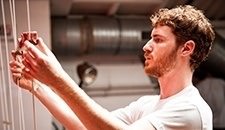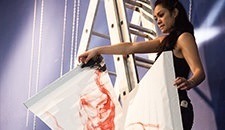Being an art broker combines the skills of a market analyzer with the encyclopedic knowledge of an art historian and the art dealer’s familiarity with the art world. The most influential art brokers have acquired this wide yet highly-specialized set of skills through different career paths. While there exist specific study programs that aim to give you all-encompassing training in the different facets of the art sector, most art brokers started out as art experts (art historians, art critics, curators, museum and gallery professionals, auctioneers, art dealers) and gradually specialized themselves in the complex processes and rituals of art exchanges. Art brokers usually acquire knowledge and experience by working side by side with senior art professionals, who introduce them to the nitty-gritty of the job and give them access to powerful networks of contacts. Even though art brokers not always share education and job experiences, there are some elements that recur in the route of those who made it to the top of their field. Read through for a step-by-step description of what it takes to become an art broker.
Know your Art History
Art brokers need to be very knowledgeable about the history of art as a discipline- its themes, methods, and objectives. Usually, art brokers narrow down their interests to a very specific period, style, artist or school. This allows them to develop highly- specialized expertise in a particular field and apply it to a very specific sector of the art market. Some art brokers can have wide-ranging art historical knowledge and become experts of more than one period or style: an art broker who works with Impressionist paintings is likely to have the broader expertise to deal with 19th century European art, but his or her insight will be very different from that of a colleague who specializes in contemporary Asian art. Building up such highly-focused and in-depth type of knowledge can take years of study and research in the field of art history: this fundamental training also includes an understanding of collection and exhibition histories, and issues of provenance (meaning the history of ownership of a work), attribution, and authenticity. Art brokers almost always hold degrees in art history; before dedicating themselves to art investment consultancy, they often worked as professionals of the art sector in other capacities- as university professors, museum and gallery curators, auctioneers, art dealers.
Familiarize Yourself with the Art Market
Art brokers often surpass in skills and expertise of art professionals, as they need to acquire complete mastery of the art market, its regulations, and dynamics. Brokers, in fact, learn to deal with art objects not only as historical artifacts, but also as assets: these are exchanged within a highly-diversified market that defies traditional investment rules, responds to peculiar legal and contractual rules, and is subjected to unpredictable fluctuations. [3] One of the first responsibilities of the art-broker-to-be is to become acquainted with the specific features of the art sector: financial expertise is in fact required to understand the processes of selling and buying, master the art of bidding, access centers of exchanges- such as art fairs and auction houses, but also networks of private owners-, and oversee the contractual and legal rules that govern art investments. This means that art brokers not only need to have an in-depth knowledge of the objects they work with, but also to be well versed in the technicalities of investment laws and develop superior analytic skills in the field of marketing and finance.
Leading international auction houses such as Christie’s and Sotheby’s offer graduate programs in Art and Business where training in the history of art is accompanied by an in-depth introduction to the workings of the art market and issues of law and commerce. These courses bring students to witness and contribute to the work of leading practitioners of the art market, allowing them to develop a unique insight into the dynamics of the art market. [4] While these highly-focused and high-end study programs undoubtedly provide privileged access to the venues and networks of the art world, the most influential art brokers nowadays have usually developed their financial expertise through diverse and separate training experiences in the field of business and law. There is no single study career which guarantees aspiring art brokers rapid entrance into the sector: the skills required for this job evolve continuously, and only the determination to expand and update one’s expertise can bring you to the top of this field.
Become the art buyer’s best friend
The art broker’s ascent to the highest ranks of the art sector relies most of all on a solid and ever-growing client base. This is a job that requires the ability to communicate very technical knowledge to clients that are often not fully conversant with the art market lingo and internal rules. More importantly, successful art brokers are advisors who are able to inspire a relationship of trust: they need to present themselves as experienced guides for the clients to refer to at any stage of the investment process, and trusted guardians who are able to manage, protect, and expand their art funds. The ability to describe your expertise clearly, understand your client’s requirements, and offer tailor-made advice is fundamental to interact and collaborate with high end net worth individuals. This is why aspiring art brokers should focus on building a relevant CV as much as on developing extraordinary interpersonal skills.
Cultivate clients’ relationships
Once you have succeeded in creating a steady client base, it is equally important to cultivate and expand this network by connecting with the other actors of the art world. Art brokers usually offer their services to art dealers, private collectors, gallery owners, individuals or companies seeking to diversify their portfolio. Some brokers work on their own and offer private counselling services, others are employed by auction houses and art advisory companies as part of larger teams of art experts. In both cases, top art brokers are extremely aware of the importance of networking to reach out as many clients as possible. Chances for establishing liaisons with the main players of the art world are multiple and disseminated globally: art fairs, auctions, gallery openings, and other exclusive events of the sector always present with the best opportunities to get in touch with eager investors, introduce oneself to potential clients, and gain visibility.


 Download application form
Download application form 


